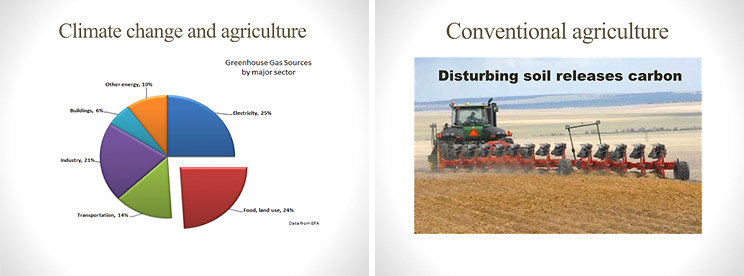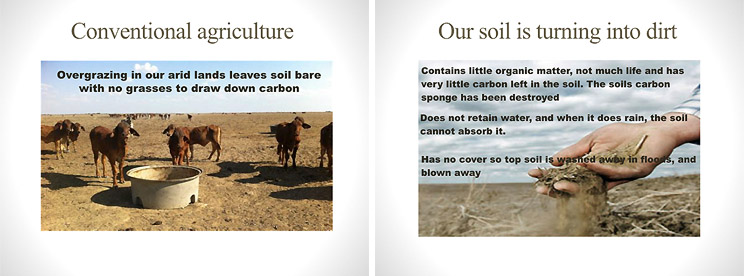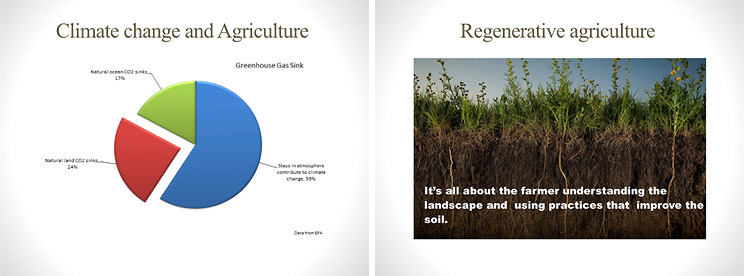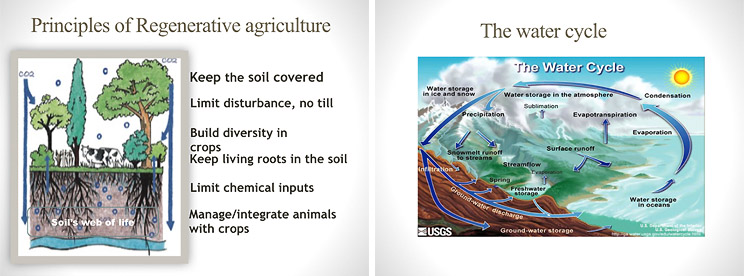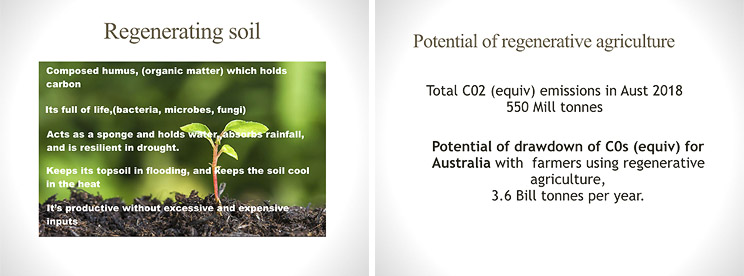Agriculture, Regeneration and Climate by Matilda Bowra
Over 80 people filled the Guide Hall at Faversham Road in Canterbury on 25 September to hear advocate Bev Middleton and former farmer and Chairman of Healthy Soils Australia Thomas Nicholas speak about Regenerative Agriculture.
See more of this event here.
Bev explained how agriculture is responsible for 24% of greenhouse gas emissions and current farming practices are destroying the health of the land, reducing the soil’s ability to absorb water and negatively impacting farmers’ ability to produce nutritious food.
She said if we continue on the current path, the quality of our food will decline even more and agricultural land will be totally degraded in 50 to 60 years.
Can Regenerative Agriculture reverse this trend?
Thomas Nicolas told us that Regenerative Agriculture is all about rebuilding the soil. This has multiple benefits including regenerating the land, enabling farmers to produce healthy food and combating climate change by drawing down carbon from the atmosphere as documented in Paul Hawken’s book Drawdown.
He also explained the main principles of Regenerative Agriculture which are: keep the soil covered, limit disturbance (no till), build diversity in crops, keep living roots in the soil, limit chemical inputs and integrate animals in crops.
While there is strong resistance to change from chemical companies who are lobbying hard to continue current destructive farming practices, Thomas said momentum is building and predicted when young people today reach older age, “they will never see a monoculture crop.”
There were many questions from audience including “what can we do?”
The answer was firstly, use your power as a consumer to purchase food that has been sustainability produced and secondly, lobby politicians to provide incentives to help farmers change.
Want to know more? Check out the web links here.
Check the Bev Middleton and Thomas Nicholas on Facebook Live here.
More images on Lighter Footprints facebook album here.
Thanks Julian Meehan – down load pro images here.
Check out our Live tweet string here.
Thanks Bev Middleton and Tom Nicholson – download presentation slides from the talk here.




